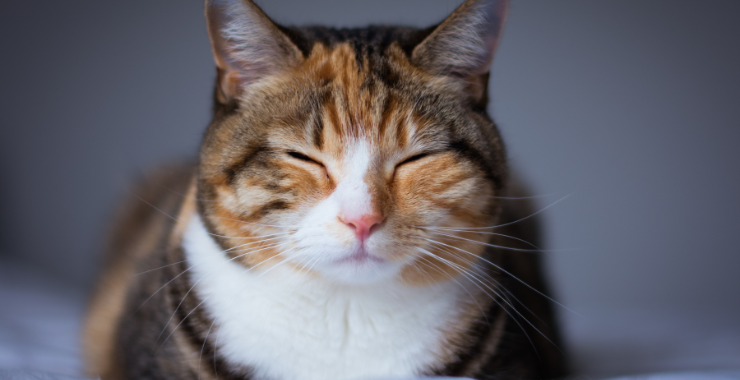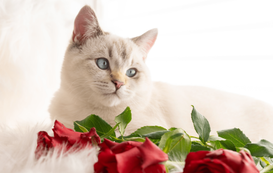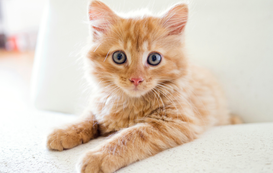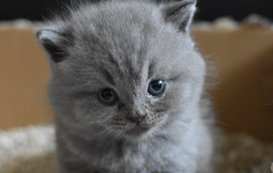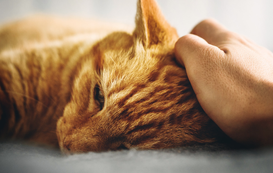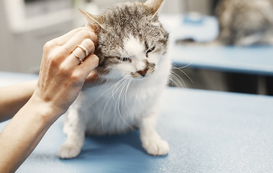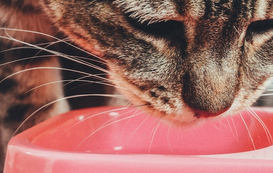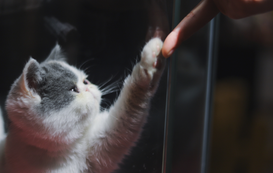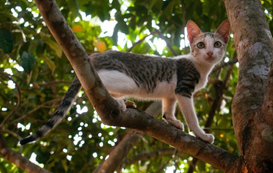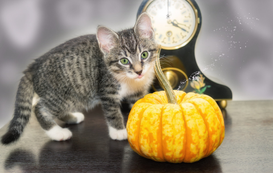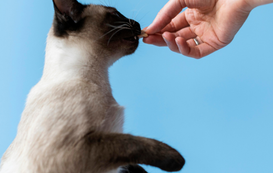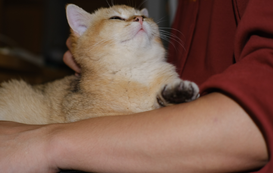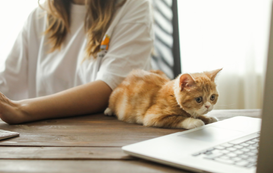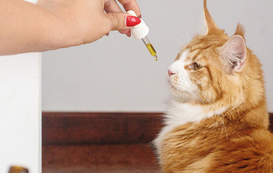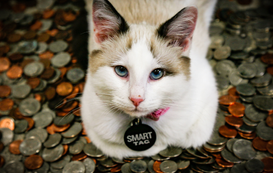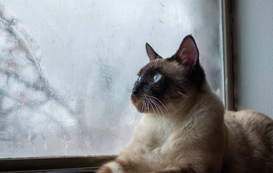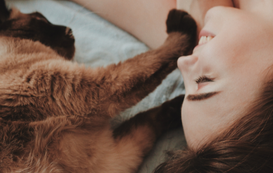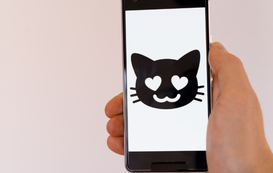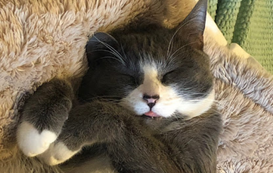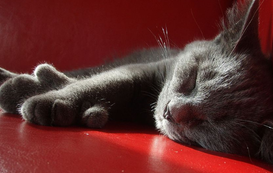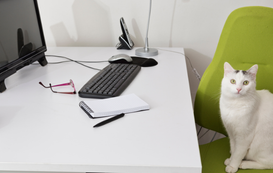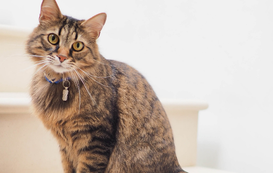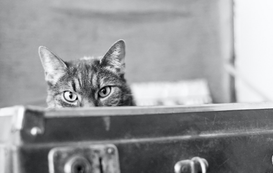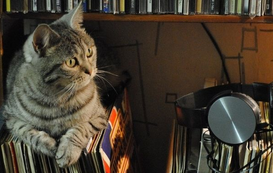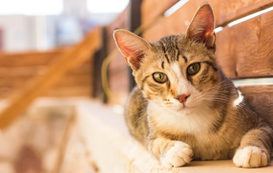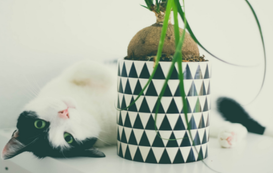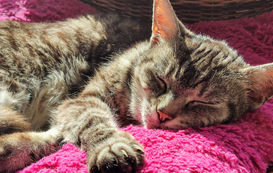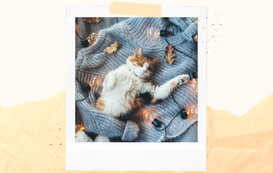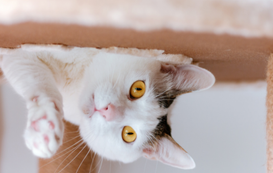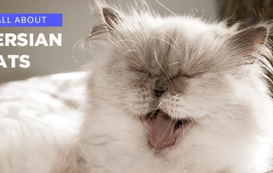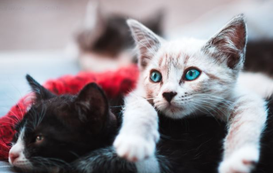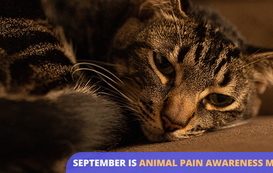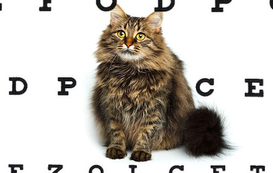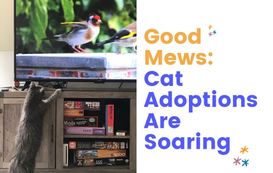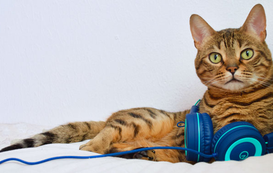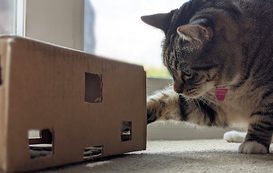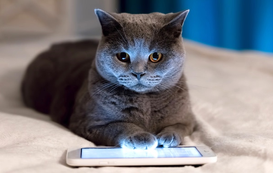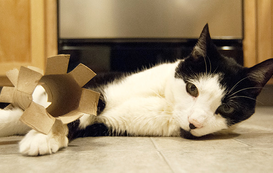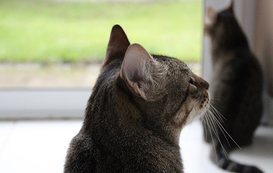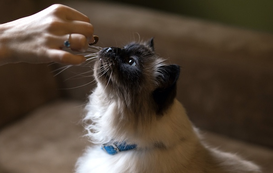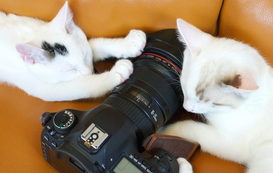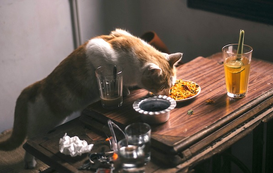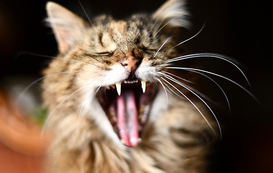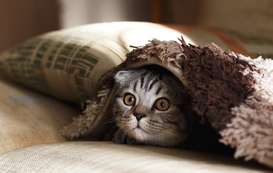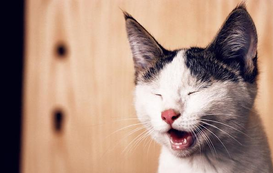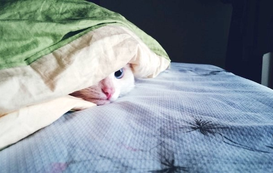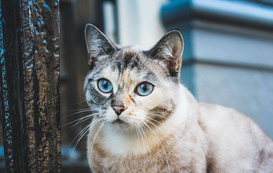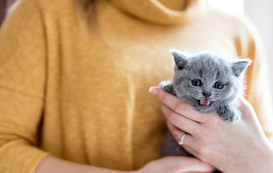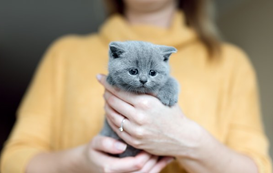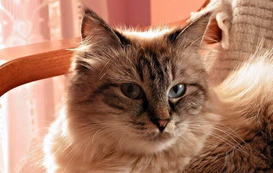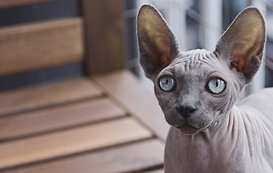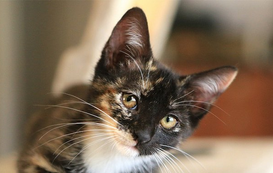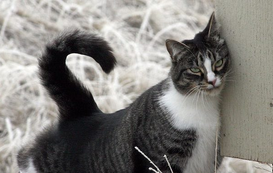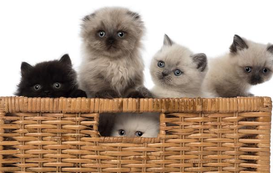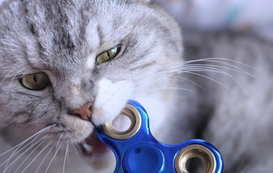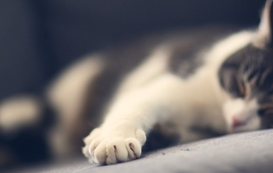Popular posts
Chonky Kitty?: Top 10 Tips for a Trim and Fit Cat
As adorable as chonky kitties are, there are some not-so-cute realities behind that extra fat: First, we all want our cats to live their best life, and they can't do that if they feel lethargic or have aching joints due to excess weight. Moreover, obesity can lead to severe health conditions and even shorten kitties’ life span, so it's essential to take action if your cat is overweight.
It’s important to understand that successful weight loss is about behavior, diet, and activity level. Many kitties are couch potatoes, leading some cat parents to think simply playing with their cats more often in an effort to increase their activity level will do the trick when it comes to trimming them down. But, unfortunately, it's just not that simple.
Don't get us wrong: Exercise is crucial. But it must be combined with feeding your cat the proper diet in the appropriate amounts. The tricky bit is most of us don't know the ins and outs of how to deal with changing our cat's diet, and it can even be dangerous to reduce your kitty's food intake too much, too soon.
Thus, getting a vet's advice before you start your cat on a weight-loss plan is crucial.
Meanwhile, here are our top 10 tips for a fit and trim kitty!
1. Make a Vet Visit
A vet will help you understand whether or not your cat is overweight or obese and if dietary changes need to be made. If so, your next step will be to work with your vet to design a diet plan and determine your cat's ideal body weight (they will do this by calculating your kitty's body condition score). Your vet will then decide how many calories your cat should have daily and suggest dietary changes. They may even prescribe a veterinary diet rather than simply recommending a new food from the grocery store.
2. Monitor Progress
Your vet will want to monitor your cat’s weight closely. At home, you can weigh your cat on a baby scale or a luggage scale to see if the numbers are dropping. You may do this as often as every few days or once a week. As a rule of thumb, a cat is expected to lose about three percent of its body weight per month on a diet. Let your vet know if you don't see any progress after three months. (If your cat isn't as active due to having less energy on its new diet, your vet may need to reduce its caloric intake further.)
3. Be Savvy with Treats
Lots of cats love treats, and that could be a problem. Your kitty's daily calorie count may not allow room for many treats. If your kitty is accustomed to generous goodies, you'll probably see some begging behavior. Give them attention and lots of pets and belly rubs (only if your cat's into them, natch!) before turning to the treat jar. When you do, break them into a couple of bites so that less is more. (Your kitty won't notice the small portions this way, purr-omise!) Or, switch up your kitty's idea of what constitutes a treat: Healthy options for treats include small amounts of cooked lean protein and fish flakes.
4. Ease into Exercise
Just a few five-minute play sessions a day can help keep cats in shape. Regular exercise can go a long way toward melting excess weight but don't overdo it, especially if your cat is not used to activity. If your cat pants during exercise, stop the activity and notify the vet if their breathing doesn't return to normal promptly. (You can find some great information about open-mouth breathing and panting here.) Exertion can bring to light underlying health issues, such as a heart condition that would require immediate attention from a medical professional.
5. Focus on Food
If your vet recommends a different food, you probably will be advised not to make the switch in one fell swoop in case it causes stomach upset. Rationing the new food by providing 20 percent of the new food combined with the old and slowly increasing it is an excellent way to mitigate potential dietary problems and food refusal. Or, your vet may recommend switching to canned food since it contains less energy per serving than dry food. The goal will be for your kitty to consume more protein and fewer carbs, which naturally leads to a leaner, healthier cat.
6. Sneak in More Activity
So, what if your kitty is still so much of a couch potato that they refuse to exercise when you pull out their favorite toys, even that dangling fish wand? Well, you'll need to find ways to make them exercise when they don't know they’re doing it. For instance, put your kitty down in a different room when you stand up from a cuddle session so they'll have to walk back to where they were. Create reasons for your kitty to go up and down your home's stairs. Put their kibble bowl on a tower so they'll have to get up on it to eat. All these small changes can be super effective once they add up. And, once your kitty loses some weight, they’re likely to enjoy playing again!
7. Pare Down Portions
Don’t rely on your eyes or what “looks like” a serving of your kitty’s new diet food. Use a measuring cup to feed them the right portions of their food. Consider pre-portioning each meal ahead of time. Another option is providing small amounts throughout the day instead of two big meals. (Most cats would prefer to eat this way if they had their druthers.) Automatic feeders are an excellent option, but foraging toys, puzzle feeders, and treat balls can help too. As a bonus, these latter options will help your kitty expend some excess energy by working for their food.
8. Deal with Mealtime Challenges
If your kitty scarfs down their dry food portion too quickly, try spreading it out on a plastic placemat instead of putting it in a bowl -- it'll take longer to eat, and your kitty will feel more satisfied with the portion, even though it's smaller. If you have more than one cat, things can get tricky when only one needs to lose weight. You may need to separate your kitties during meal time or feed your kitty who doesn't need to lose weight an extra meal before bed (when the other kitty is asleep or in another room).
9. Stay the Course
Kitties can feel blue when things change, and their parents can get demotivated about making these changes, especially if it takes a while to reach success. The fact is, if your kitty is significantly obese, you could be looking at a year-long process to hit the goal. Try to find ways to stay focused on the big picture by reminding yourself of the health risks of a higher weight. Employ humans' favorite motivational tactics, such as taking before and after photos or posting progress to social media to make the journey easier. The reward of a healthier, longer life is priceless, so stick with it.
10. Be Patient
And last but not least, it's essential to remain patient with your kitty during this time, even if they react with bad behavior or stubbornness. They don't understand that they have a weight problem or why things have changed. They just know they used to get lots of food and treats, and they loved you even more for giving them those tasty things. But, you’re the hooman and that means that you are the one who can make sense of this situation. Continue to remind yourself that food is not love, and then give your kitty a big cuddle of celebration every time the scale goes down.
Meowtel Sitters Can Help!
Going on a trip? Our sitters will honor your kitty’s dietary and mealtime requests, such as portioning out food in carefully measured servings or separating kitties for meal times so each can have what they need. Plus, playtime is part and parcel of what we do here, so rest assured they'll get in that important activity too. So, feel free to take a real journey while we help your kitty along their weight loss journey! Find your sitter match here.
Photo by Jack Brind on Unsplash

